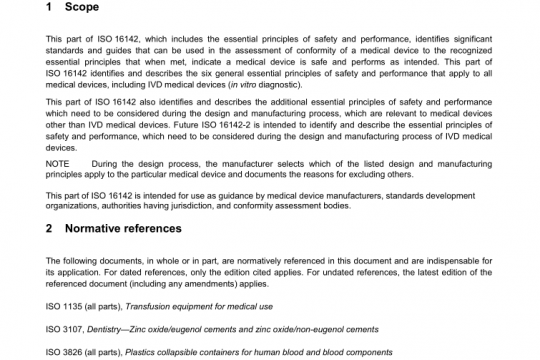ANSI AAMI ST33 pdf free download
ANSI AAMI ST33 pdf free download.Guidelines for the selection and use of reusable rigid container systems for ethylene oxide sterilization and steam sterilization in health care facilities.
2.4 chemical indicator: Sterilization process monitoring device designed to respond with a characteristic chemical or physical change to one or more of the physical conditions within the sterilizing chamber. NOTE—Chemical indicators are intended to detect potential sterilization failures that can result from incorrect packaging, incorrect loading of the sterilizer, or malfunctions of the sterilizer. The “pass” response of a chemical indicator does not prove that the item accompanied by the indicator is sterile. 2.5 container, rigid sterilization: Packaging system designed to contain items for sterilization, storage, transportation, aseptic presentation of contents, and return of contaminated items to the decontamination area. NOTE—The system generally consists of a bottom or base with carrying handles and a lid that is secured to the base by means of a latching mechanism. A basket or tray to hold instruments or other items to be sterilized is placed inside. A filter or valve system is incorporated into the lid and/or base to provide for air evacuation and sterilant penetration during the sterilization cycle and to act as a barrier to microorganisms during storage. 2.6 contaminated: State of having been actually or potentially in contact with microorganisms. NOTE—As used in health care, the term generally refers to microorganisms that are capable of producing disease or infection. 2.7 cycle time: Total elapsed time of a sterilization cycle from the time the sterilizer door is closed and the cycle is activated until the time the cycle is completed and the door is opened. NOTE—Cycle time can include come-up or heat-up time, exposure time, come-down time, and cooling or drying time. For appropriate equipment, cycle time also can include prehumidification time, pre- and post-vacuum time, and aeration time.2.8 decontamination: According to the Occupational Safety and Health Administration (OSHA), “the use of physical or chemical means to remove, inactivate, or destroy bloodborne pathogens on a surface or item to the point where they are no longer capable of transmitting infectious particles and the surface or item is rendered safe for handling, use, or disposal” [29 CFR 1910.1030]. NOTE—The term generally is used in health care facilities with reference to all pathogenic organisms, not just those transmitted by blood. 2.9 density: Mass per unit of volume. 2.10 filter: Device secured to the rigid container lid and/or bottom that serves to allow passage of air and sterilants yet provides a microbial barrier. NOTE—The filter media may be reusable, disposable, or permanently affixed to the container. 2.11 filter retention system: Mechanism that secures disposable filters in place. NOTE—The filter retention system may be a retention plate or a retaining ring. It is disengaged to release used filters for disposal and reengaged to secure new filters. 2.12 gasket: Pliable strip that serves as a seal between the lid and the container to prevent entry of microorganisms. 2.13 heat sink: Heat-absorbent material; a mass that readily absorbs heat. 2.14 heat-up time: Time required for the entire load to reach the selected sterilizing temperature after the chamber has reached that temperature.ANSI AAMI ST33 pdf download.
Other IEC Standards
-

ANSI AAMI ISO 16142-1 pdf free download – non-IVD medical devices and guidance on the selection of standards
AAMI standards list DOWNLOAD -

ANSI AAMI ISO 16142-2 pdf free download – General essential principles and additional specifc essential principles
AAMI standards list DOWNLOAD


